Spider-Man has starred in twelve films over four decades. Here’s every Spider-Man movie ranked, including both live-action adventures and animation.
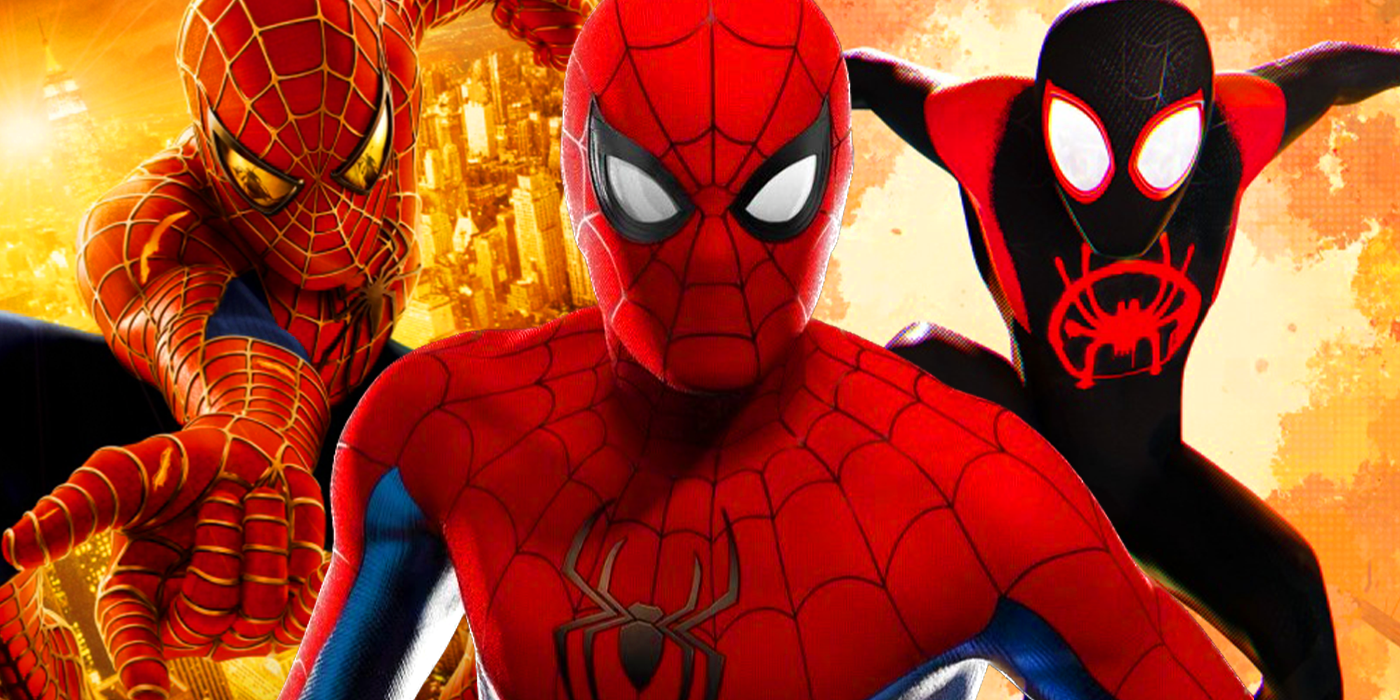
Marvel Comics’ web-slinger Spider-Man has been adapted into movie format twelve times, each delivering a fresh take on the iconic Marvel hero. Prior to Spider-Man’s blockbuster movies, the young hero was the star of several TV series and made-for-TV movies, along with various acclaimed cartoons. In decades past, Spider-Man’s film rights had been a major point of contention, thwarting plans for directors Tobe Hooper and James Cameron to bring the character to the big screen. Eventually, Columbia Pictures acquired the film rights to Spider-Man, allowing Sony to develop their first Spider-Man franchise under the watchful eye of Sam Raimi.
After Raimi’s Spider-Man trilogy, he and Sony parted ways, leading to Spider-Man being rebooted with Marc Webb’s The Amazing Spider-Man duology. Andrew Garfield replaced Tobey Maguire as Peter Parker, but another shake-up came in 2015 when Sony and Marvel Studios joined forces, allowing Spider-Man to finally be introduced into the Marvel Cinematic Universe timeline. Jon Watts took over as director for a new trilogy featuring Tom Holland as Spider-Man, while Sony put animated films featuring Miles Morales’ Spider-Man into development. Spider-Man’s film history is a long one, so here are the twelve current Spider-Man films, ranked worst to best.
Honorable Mention: Italian Spiderman
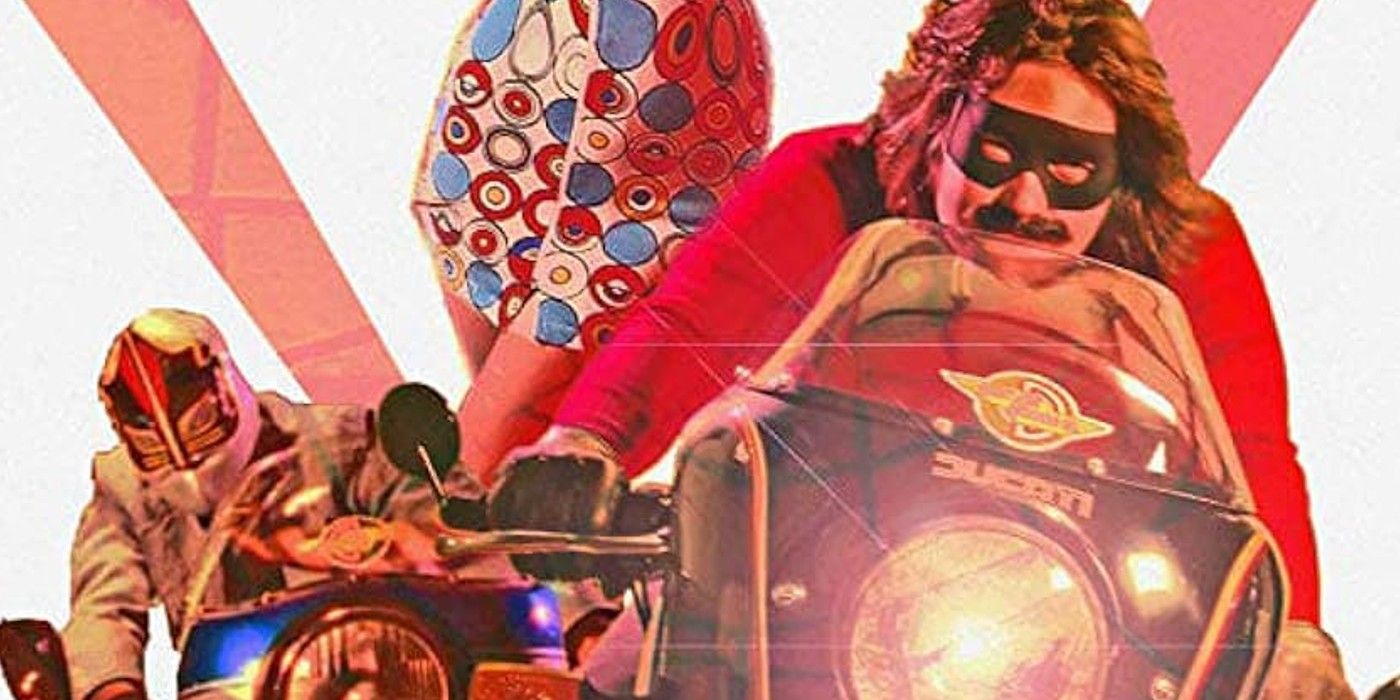
Unlicensed by Marvel and acting as a parody of the titular Marvel Comics character, the Australian film Italian Spiderman has an important place in Spider-Man’s cinematic history. Created by filmmaker Dario Russo and released in 2007, Italian Spiderman was one of the earliest independent movies to achieve viral status online, parodying the exploitation movies of the 1970s and ’80s. Various creators at Marvel have taken kindly to the parody, even though the film was never an official Marvel project. Even Stan Lee himself was impressed, stating, “Spider-Man with a mustache, maybe we should have done him this way.” (via YouTube).
Marketed as a lost Spider-Man movie, Italian Spiderman was deliberately filmed in the style of the 1960s or ’70s. David Ashby’s (credited as Franco Franchetti) interpretation of the Italian Spiderman has nothing to do with Marvel Comics’ Peter Parker, which is part of where the film’s charms lie. Driving a motorcycle, wielding shotguns, and chain-smoking cigarettes are hardly qualities many expect from Spider-Man, and Italian Spiderman doesn’t sport anything similar to the iconic Spider-Man costume. Even so, Italian Spiderman remains one of the most creative and hilarious interpretations of Spider-Man to date.
12. Spider-Man (1977)
A TV Movie Pilot For 1978’s The Amazing Spider-Man TV Series
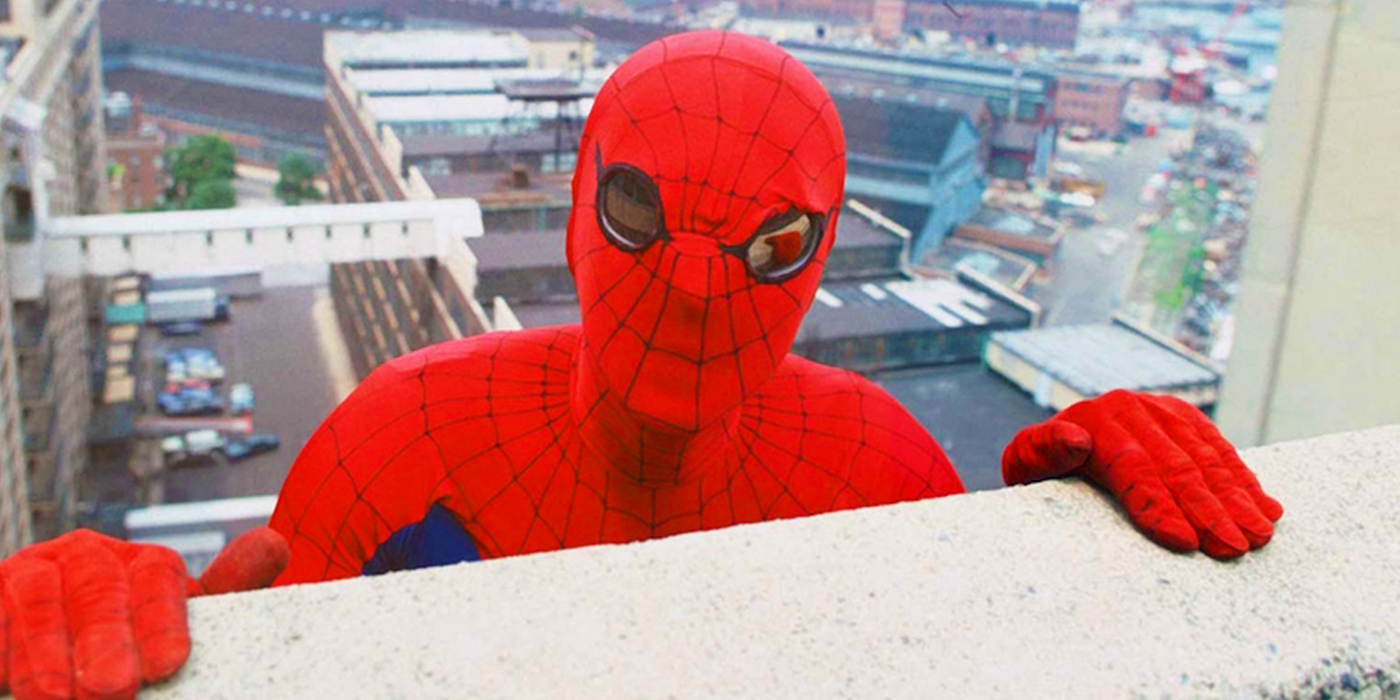
Almost thirty years before 2002’s Spider-Man, actor Nicholas Hammond made his breakthrough as Peter Parker in the 1977 direct-to-TV film Spider-Man. The film acted as the pilot for 1978’s The Amazing Spider-Man series and produced two sequels of its own: Spider-Man Strikes Back in 1978 and Spider-Man: The Dragon’s Challenge in 1981. Hammond reprised the role of Peter Parker in both sequels, which saw Spider-Man go up against gangsters and corporate criminals instead of his usual rogues gallery. 1977’s Spider-Man managed to gross $9 million worldwide, which equates to around $45 million when adjusted for inflation.
1977’s Spider-Man is seriously dated and definitely doesn’t hold up against modern interpretations of the web-slinger. This should come as no surprise, as contemporary projects have multi-million dollar budgets and a wide range of special effects that enhance every moment of Spider-Man’s adventures. Even so, 1977’s Spider-Man and its sequels are an important fixture in Spider-Man’s cinema history, with Hammond proving that Peter Parker’s friendly neighborhood antics could work effectively off the page, with Hammond’s kung fu chopping and rope-throwing paving the way for future films.
11. Japanese Spider-Man (1978)
A Unique Take On The Web-Slinger
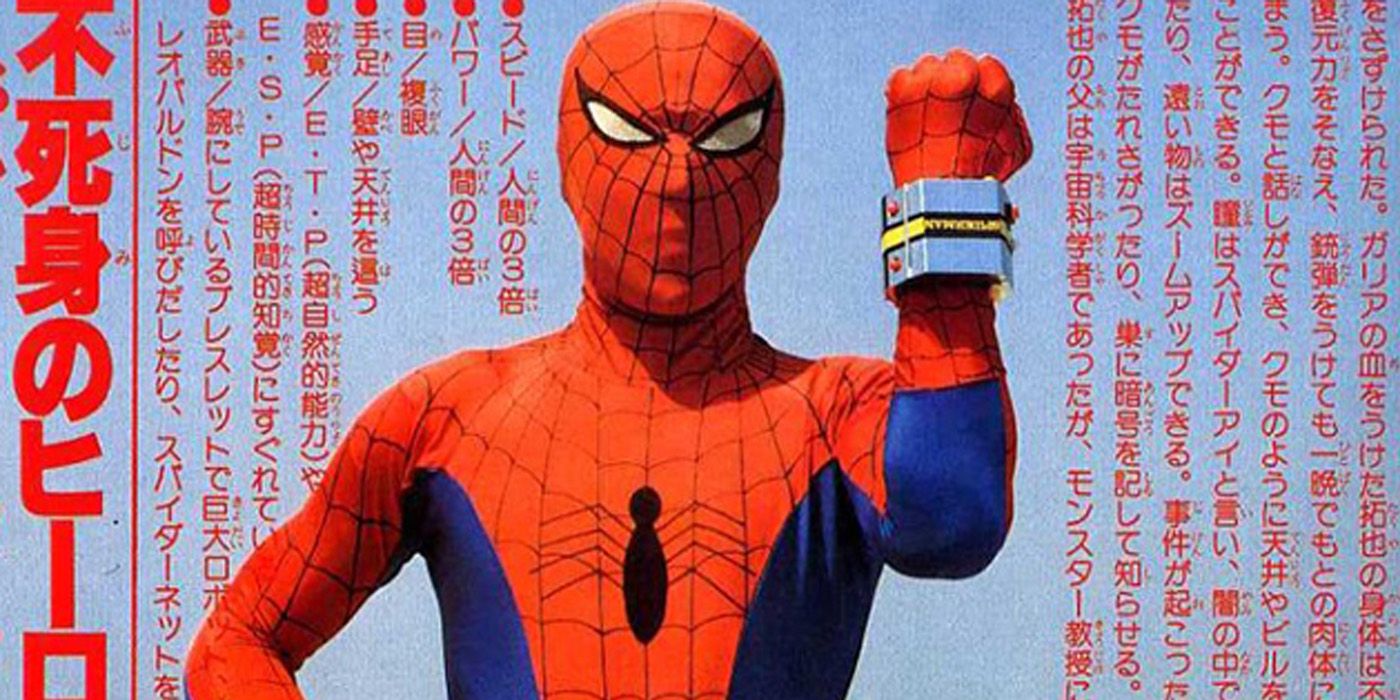
Of all the licensed Spider-Man movies, 1978’s Japanese Spider-Man movie (dubbed by both fans and Marvel Studios as “Japanese Spider-Man”) is definitely the strangest when compared to the source material. However, despite using guns and having a Power Rangers-style Mech, Shinji Tōdō’s Takuya Yamashiro is a canon Spider-Man. He’s appeared in multiple Spider-Verse comics and is a featured character in 2023’s Spider-Man: Across The Spider-Verse. Much like the Italian Spiderman parody, Takuya has very little in common with Peter Parker. Takuya goes by the alias “Emissary from Hell” instead of the usual Friendly Neighborhood Spider-Man.
The changes to Spider-Man’s backstory for the Japanese iteration were deliberate. Thanks to a partnership between Marvel Comics and Toei toys, Spider-Man was introduced to Japan. From this business decision, Takuya Yamashiro was born, and the Japanese Spider-Man even had his own rogues gallery, mostly made up of Godzilla-sized monsters. This version of Spidey’s influence stretches beyond the Spider-Fandom. His mech, Leopardon, proved to be such a hit with Japanese kids that Toei adapted the concept for several shows, including Battle Fever J — the precursor to Mighty Morphin Power Rangers.
10. Spider-Man 3 (2007)
The Weakest Of The Raimi Trilogy
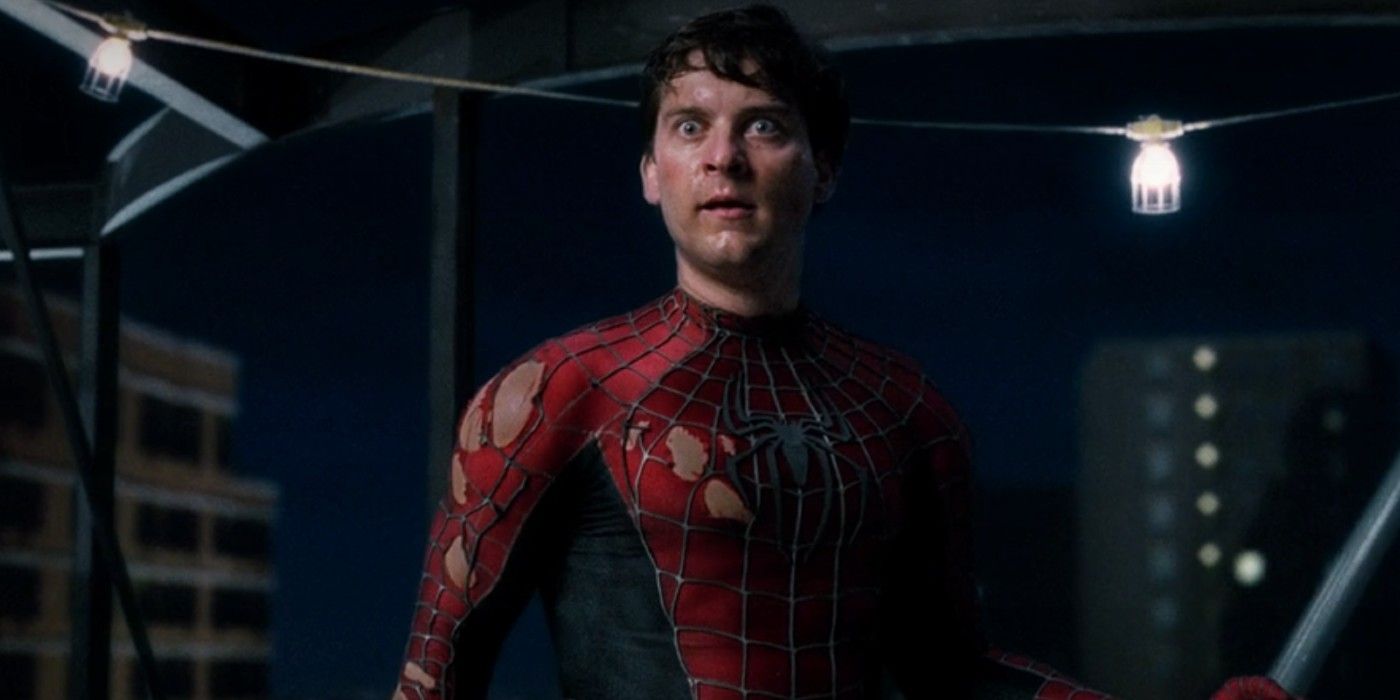
Sam Raimi’s Spider-Man 3 is still the weakest of his Spider-Man trilogy and is often regarded as the worst modern Spider-Man film. Set a year after Spider-Man 2, Maguire’s Peter Parker had finally struck a balance between being Spider-Man and being Peter Parker, even planning to propose to Kirsten Dunst’s Mary Jane Watson. However, the rise of the New Goblin, James Franco’s Harry Osborn, the appearance of Thomas Haden Church’s Sandman, and the added Venom symbiote overcomplicate Spider-Man 3’s storyline. But emo street-dancing aside, it’s safe to say that Spider-Man 3 isn’t as bad as its lingering notoriety would suggest.
Peter’s airborne fight with the New Goblin and his subway tussle with Sandman are still thrilling affairs. Sandman is the star of Spider-Man 3’s standout scene, however, as the moment when his disintegrating hands cannot hold his daughter’s pendant is heartbreaking thanks to a combination of detailed CGI and a touching score. It’s a shame that this deftness is rarely seen elsewhere in the film. Sam Raimi famously disliked Venom as a villain, but Sony and producer Avi Arad pushed for his inclusion. As a result, Venom feels tragically undeveloped. Raimi’s dissatisfaction is evident throughout Spider-Man 3, which remains a dark and disappointing stain on Spider-Man’s movie past.
9. The Amazing Spider-Man 2 (2014)
Repeating The Mistakes Of The Past
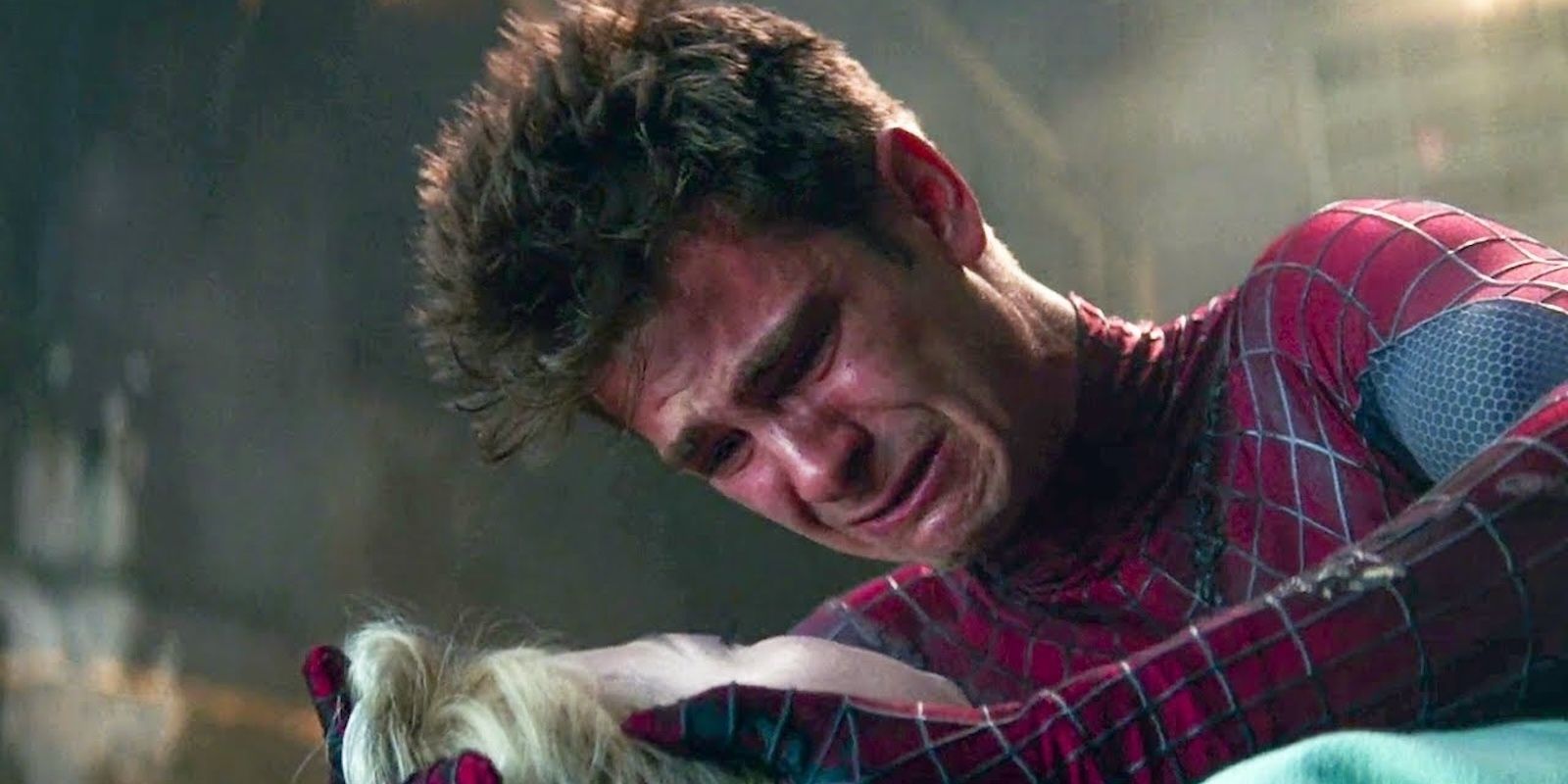
The Amazing Spider-Man 2 repeated many of Spider-Man 3’s failings. Marc Webb’s sequel saw Andrew Garfield wrangle Jamie Foxx’s Electro, the darkness spreading from Oscorp and Dane DeHaan’s Harry Osborn, and the mystery of his parents’ death, all while trying to repair his troubled relationship with Emma Stone’s Gwen Stacy. Unfortunately, these storylines simply made The Amazing Spider-Man 2 feel too complex and cramped, with Sony pivoting from the grounded approach of 2012’s The Amazing Spider-Man, perhaps in an effort to copy Marvel Studios’ success with The Avengers.
On top of this, The Amazing Spider-Man 2 also debuted a breezier, more jokey Spider-Man. While this new tone actually benefits the historically light-hearted hero, the over-abundance of plots does not. Sony was clearly trying to set up a shared universe, teasing the next installment and a Sinister Six movie, but this derailed The Amazing Spider-Man 2’s story. However, there is still enjoyment to be had in The Amazing Spider-Man 2, particularly with Andrew Garfield and Emma Stone’s performances. At the time, the actors were dating, creating authentic chemistry on screen that many other films have failed to generate.
8. The Amazing Spider-Man (2012)
A Quick Reboot With Potential
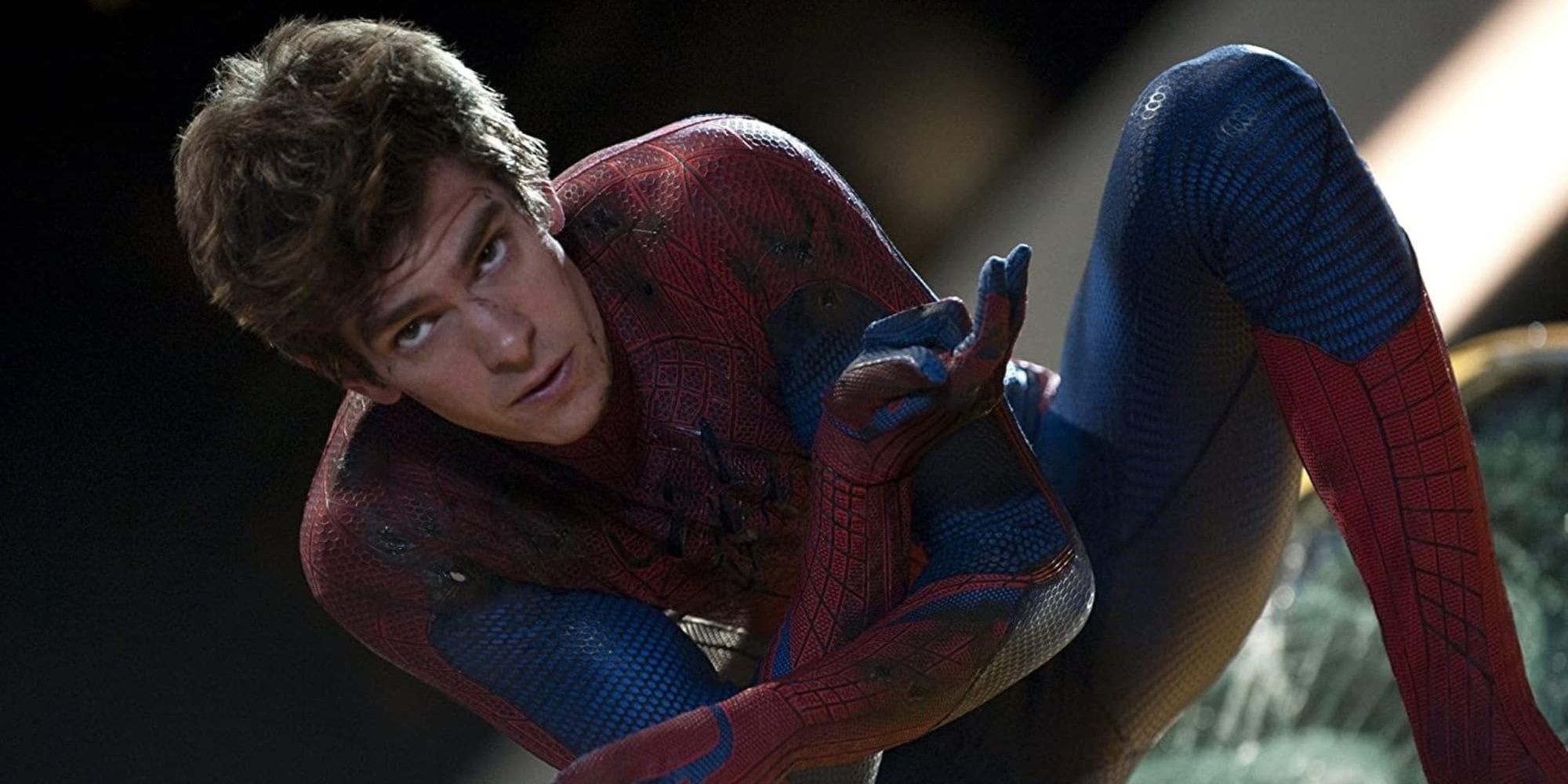
Despite the poor reception to Spider-Man 3, sequels had been planned at Sony. However, Sam Raimi departed the project in 2010 followed swiftly by Spider-Man 4’s main cast. As such, Sony moved forward with a reboot, now with Marc Webb as director, and Andrew Garfield as Peter Parker. Webb’s new take on Spider-Man initially promised to tell the story of Parker’s absent parents, though this didn’t really come to pass. The bullied, nerdy Peter is re-imagined as an awkward loner, and Mary Jane and Green Goblin are exchanged for Gwen Stacy and the Lizard in a retelling of Spider-Man’s origins.
Marc Webb clearly wanted to try something different with Spider-Man but was constrained by the Marvel Comic source material – not to mention that Raimi’s Spider-Man already told Peter Parker’s origin story very successfully. The Amazing Spider-Man tries to embellish these familiar beats, but the film often feels unfocused when it does. The power of Uncle Ben’s death is diluted because of the changes, and similarly, Peter’s prolonged search for Ben’s murderer hampers his arc. Still, The Amazing Spider-Man is overall a fairly solid outing for the wall-crawler.
7. Spider-Man: Far From Home (2019)
Spider-Man Leaves NYV
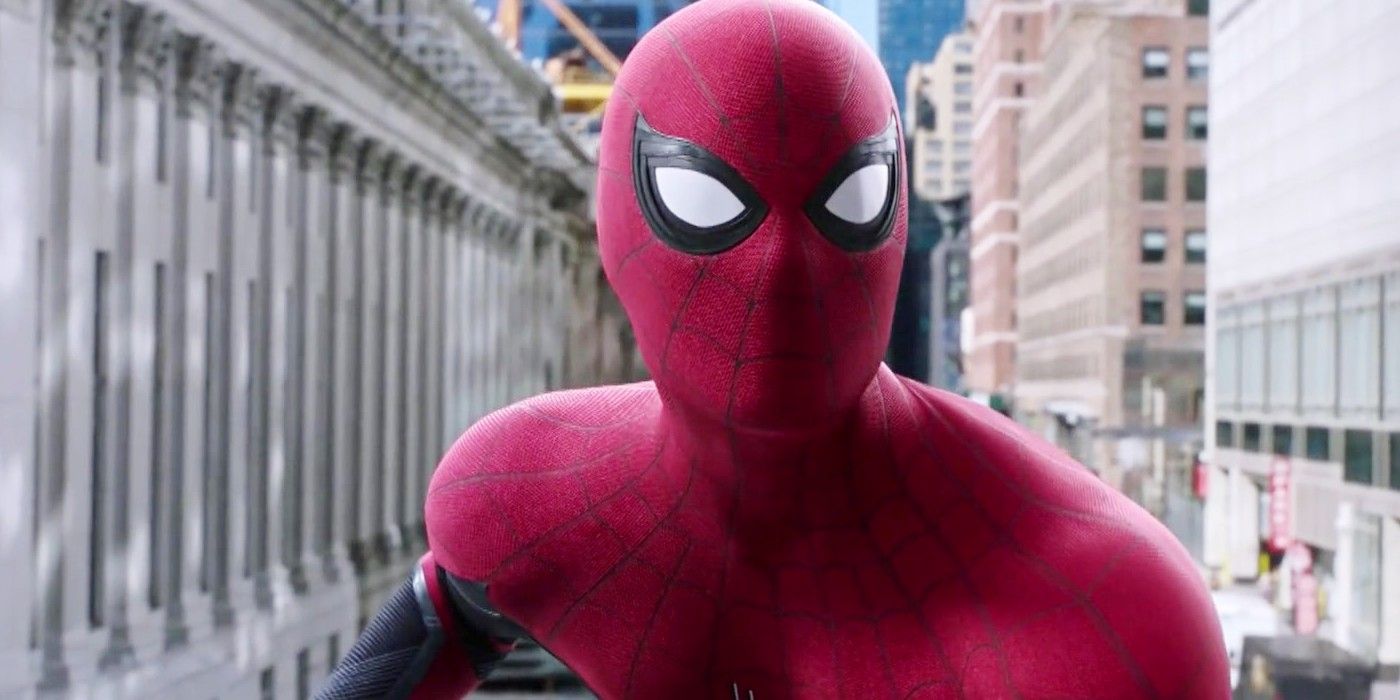
After the traumatic events of the MCU’s Avengers: Endgame, Tom Holland’s Peter Parker wanted nothing more than a relaxing summer vacation in Europe with his classmates. However, Samuel L. Jackson’s Nick Fury had other ideas, and a new and dangerous threat emerged in the form of Jake Gyllenhaal’s cunning Mysterio. After a strong start in Spider-Man: Homecoming, Jon Watts’ second installment in the MCU’s Spider-Man franchise does take a while to get to the action, but his increasingly confident direction spawns slicker, more spectacular action sequences, and compelling character moments that often rival its predecessor.
Moreover, the film boasts some incredibly psychedelic visuals courtesy of Mysterio. Gyllenhaal delivers a brilliant performance as the enigmatic villain, who also brings forth one of the meatiest socio-political commentaries contained in a Spider-Man movie yet. However, Spider-Man: Far From Home has to work hard to reorient Peter Parker’s world post-Endgame, leading to the film often feeling less like Spider-Man is the focus of the story. The inclusion of EDITH in Spider-Man: Far From Home leaves something to be desired, starkly contrasting with what’s been established – in terms of both Spider-Man’s morality and the wider world he inhabits.
6. Spider-Man: Homecoming (2017)W
Spider-Man Finally Joins The MCU
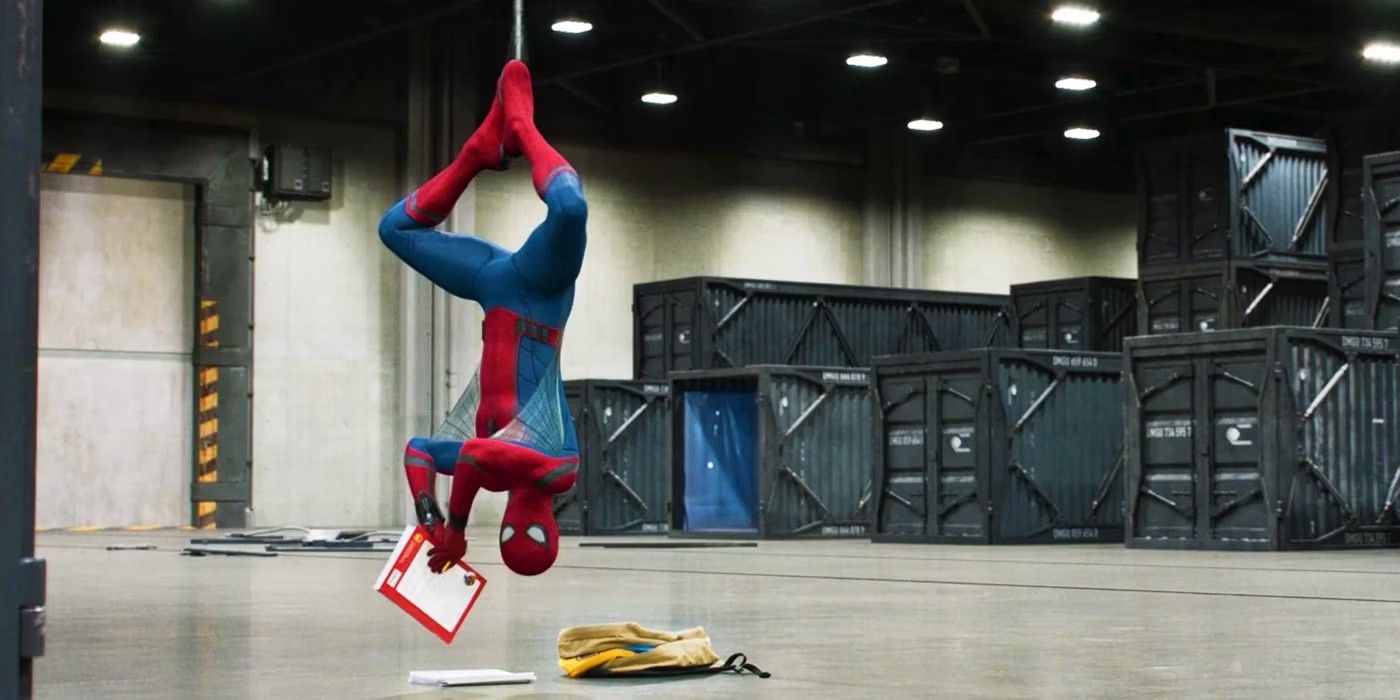
The Amazing Spider-Man 2’s disappointing reception prompted Sony to finally share the character with Marvel Studios. Sony still retains Spider-Man’s film rights and produces every new film, but Marvel Studios creatively dictates Spider-Man’s stories in the MCU. In the MCU’s world of superhero teams and alien invasions, Tom Holland’s Peter Parker dreamed of leaving his high school life behind, especially after his debut in Captain America: Civil War, but is rebuffed by Robert Downey Jr.’s Tony Stark, a.k.a. Iron Man. Facing the villainous Vulture, however, means Spider-Man was able to prove himself as a valuable neighborhood hero.
Spider-Man: Homecoming marked a new rebirth for the character, resulting in several changes. For example, Uncle Ben’s death is only alluded to, and Spider-Man uses a high-tech costume. This re-configuring didn’t sit well with some viewers, yet most make sense. The majority of these changes worked to great effect for the young, arguably more comic-accurate, hero. Jon Watts took notes from teen comedies of the 1980s for Spider-Man: Homecoming, and the result is a tone that is utterly suitable for Spider-Man. Sprightly and savvy, the teenage Peter Parker captures the humor and rebellious spirit of Spider-Man perfectly.
5. Spider-Man: No Way Home Brings Three Versions Of Peter To The Big Screen
2021
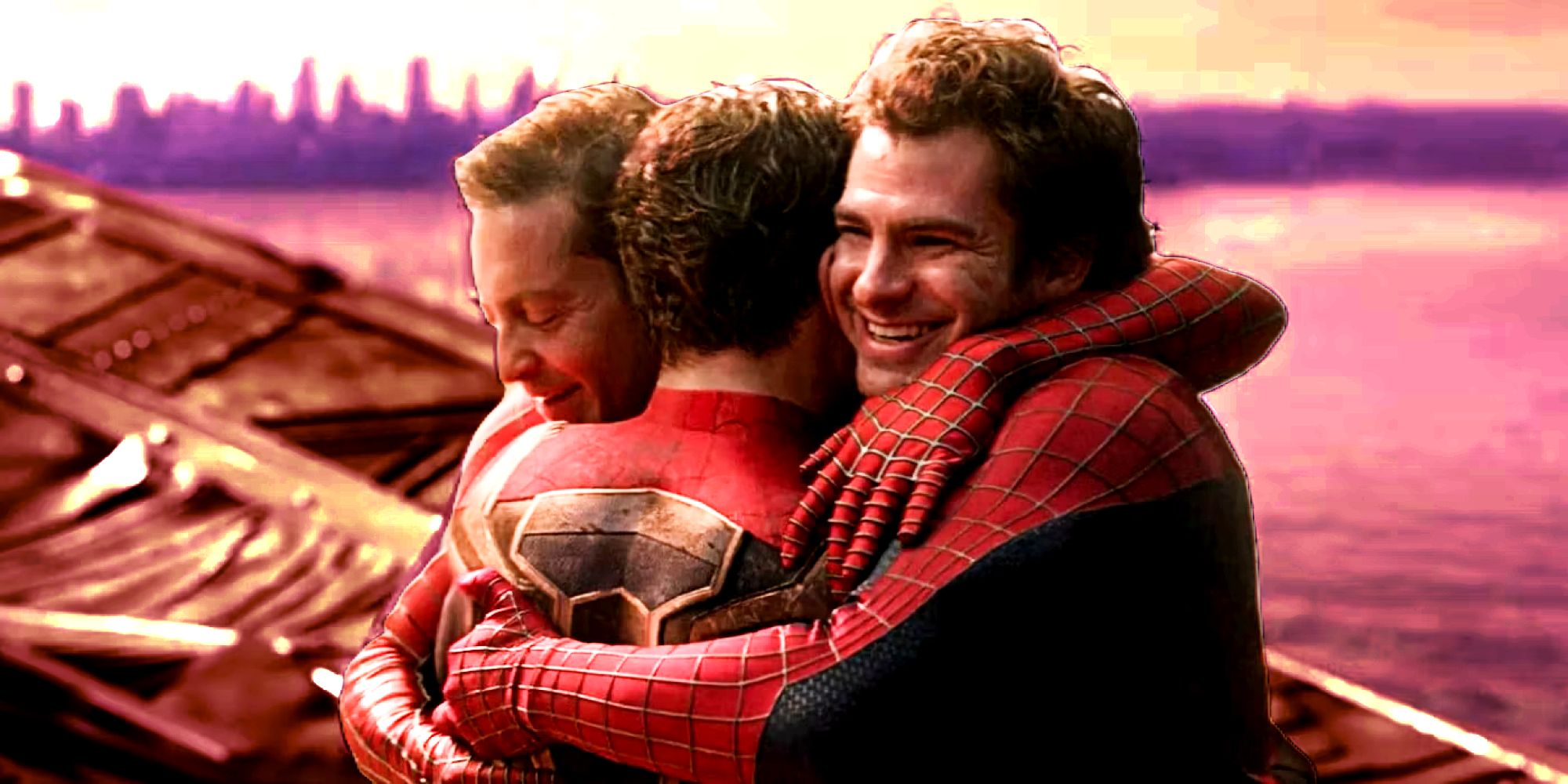
Spider-Man: Far From Home’s post-credits scene thrusts Peter Parker’s life into turmoil as his identity is revealed to the world. Disheartened by the impact that his double life has had upon his loved ones and desperate to regain some semblance of privacy and control, Parker seeks out Benedict Cumberbatch’s Doctor Strange for help, but the spell to backfires, the multiverse opens, and several villains from other universes are released into the MCU. Spider-Man: No Way Home is the biggest Spider-Man movie in terms of its scale and ambition, but this is both a blessing and a curse.
The early storyline of Spider-Man: No Way Home is decidedly clunky, as is the case with some of the CGI and conversations. Several characters are regretfully side-lined, and some subplots need more breathing room. Spider-Man: No Way Home is so infectiously gleeful at its accomplishments that many viewers will be able to forgive its shortcomings. The enthusiasm that Jon Watts has for Spider-Man is on display in this third installment, and the film has some weight, too. The grief and sacrifice that define Peter Parker come to the forefront, allowing Tom Holland and his cast mates to shine even brighter.
4. Spider-Man (2002)
A Landmark Superhero Movie
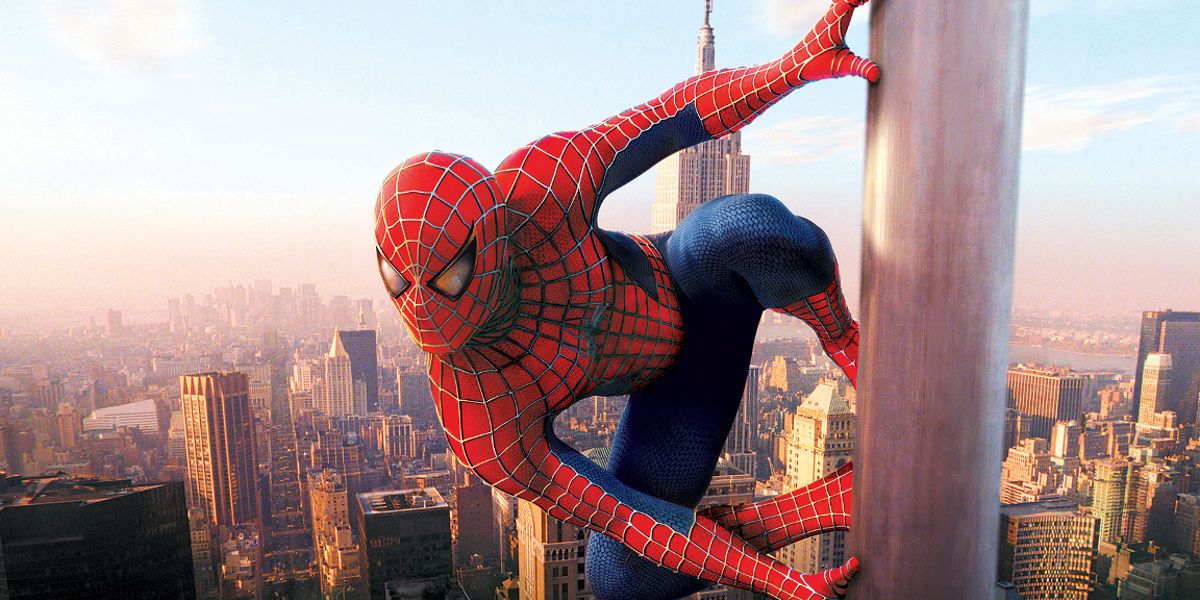
Sam Raimi’s first Spider-Man film set the bar for later entries, swiftly breaking records and becoming one of the most revered superhero movies ever. It’s now over two decades old, but it’s still clear these successes were well-deserved. From Peter’s first web swing to that infamous upside-down kiss, Sam Raimi’s affection for the character is apparent throughout. Out of all of Spider-Man’s movies, 2002’s Spider-Man remains the most earnest and thorough telling of Peter Parker’s origins. Tobey Maguire is still praised for his shy and endearing take on the character, even if many fans decry his lack of one-liners.
Despite 2002’s Spider-Man’s light touches of humor, the film is not afraid to go to some dark places. The way in which Willem Dafoe’s Green Goblin attacks Aunt May is unnerving, as is his assault on Spider-Man in the third act. Still, it’s hard to deny just how important Spider-Man is and just how rousing it can be, especially during the film’s finale, where Danny Elfman’s soundtrack makes the end sequence soar. It’s a dated but simultaneously timeless masterpiece.
3. Spider-Man 2 (2004)
Building On A Solid Foundation
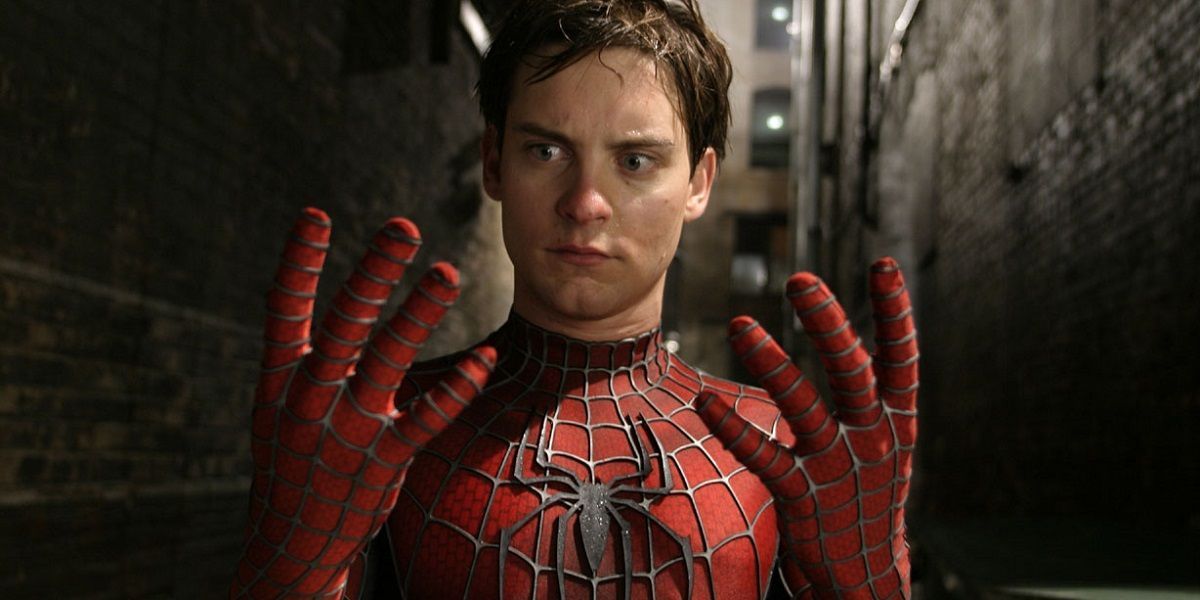
The fact that director Sam Raimi managed to improve upon 2002’s Spider-Man is no mean feat. Set two years after Uncle Ben’s death, Peter Parker is shown to have kept his vow to fight crime. Even so, his personal life is turbulent, as he struggles with college, financial problems, and the fact that Mary Jane is engaged to another man. When his mentor, Dr. Otto Octavius, enhances himself into Doctor Octopus, Spider-Man has more challenges to face. In a film so full of content, it’s remarkable that Spider-Man 2 gets so much right.
Tobey Maguire is at his best in the role, and he capably encapsulates Peter’s heartache, torment, and humor. Peter may not be the motormouth of Marvel Comics, but Maguire gets more opportunities to show off his more comedic qualities. Alfred Molina delivers a layered and sympathetic rendering of Doctor Octopus, proving that Spider-Man 2 serves as a brilliant study of the pitfalls of power and the sacrifices that come with superheroism. It doesn’t hurt that it’s also visually spectacular, with the infamous train fight remaining one of the finest displays of Spider-Man’s powers on-screen.
2. Spider-Man: Into The Spider-Verse (2018)
A Bold New Direction For Spider-Man Movies
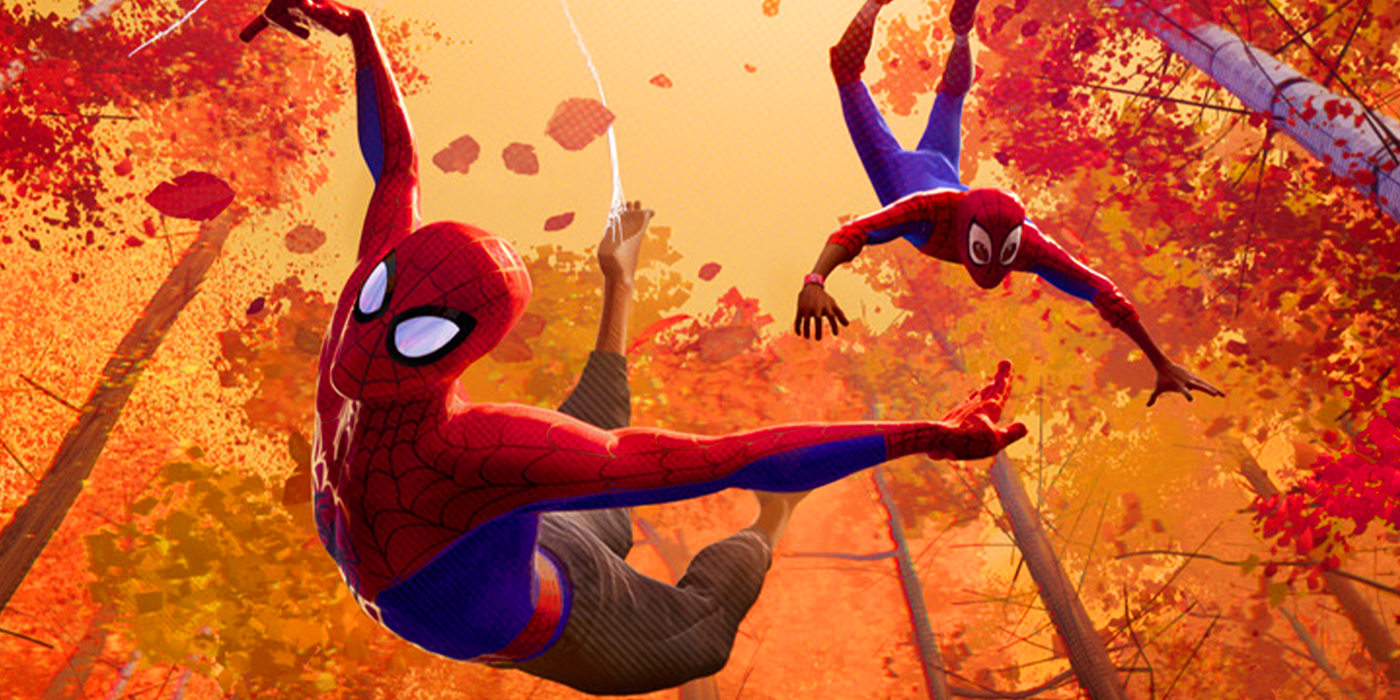
Spider-Man: Into the Spider-Verse quickly became one of the best Spider-Man films following its 2018 release. By delving into the previously untapped potential of alternate realities, Sony avoided the kind of superhero fatigue currently plaguing Marvel Studios. Directors Bob Persichetti, Peter Ramsey, and Rodney Rothman produced a poignant and innovative Spider-Man movie that reinvigorated Spider-Man. Instead of focusing on Peter Parker, Spider-Man: Into the Spider-Verse followed Brooklyn teenager Miles Morales on his journey to become the new Spider-Man, facing Kingpin and Dr. Olivia Octavius in the process, while also meeting several other Spider-People from across the multiverse.
Spider-Man: Into the Spider-Verse probes every part of Spider-Man’s pop culture legacy but never feels smug, nor does it lose sight of what makes Spider-Man such a beloved character. His core of power and responsibility are re-examined not just as Peter Parker’s motto, but as everyone’s. However, Into the Spider-Verse isn’t just a heartfelt love letter to the wall-crawling hero; it’s also one the funniest and most endearing Spider-Man movies, and its attention to detail is frankly astounding.
1. Spider-Man: Across The Spider-Verse (2023)
Bigger And Just As Good As Its Predacessor
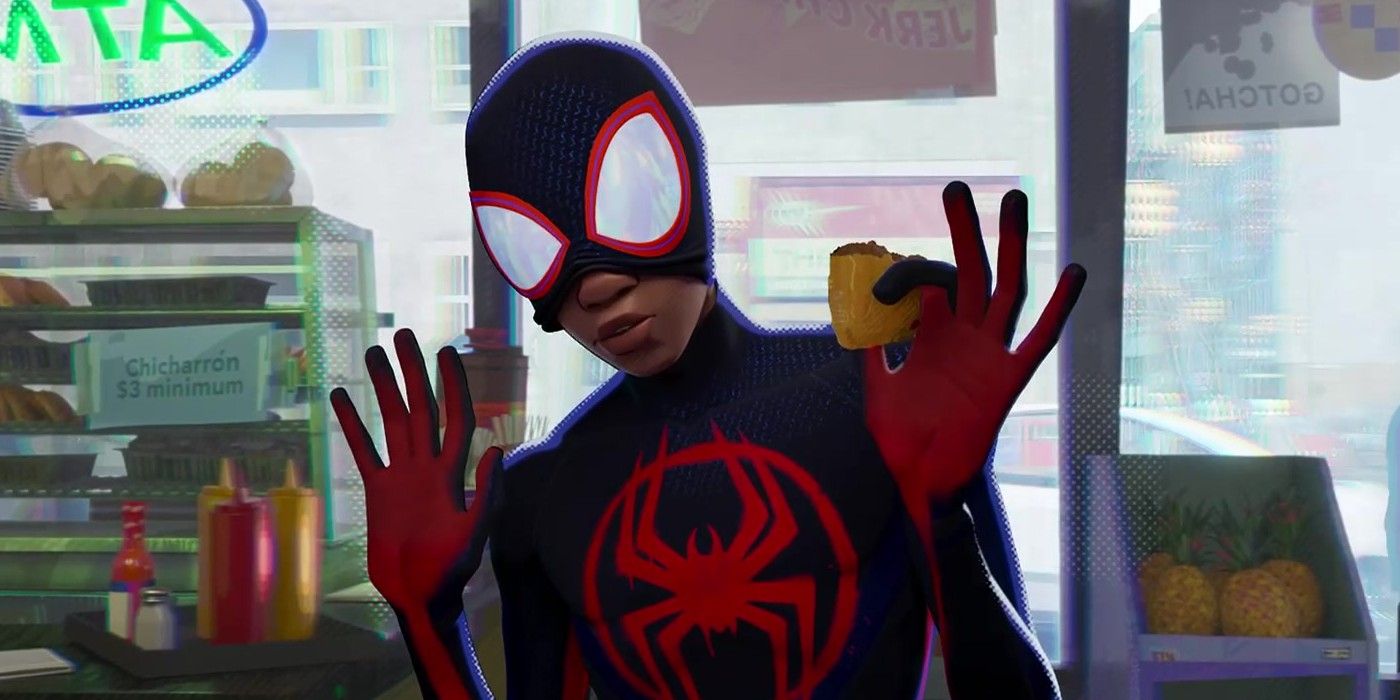
Spider-Man: Into the Spider-Verse hit the jackpot when it came to Spider-Man success stories, but its 2023 sequel manages to follow suit. Spider-Man: Across the Spider-Verse picked up 16 months after the events of the first film, allowing the film to fully show off Miles Morales’ hold over his Spider-Man powers, including his electricity and invisibility. Spider-Man: Across the Spider-Verse also delves into the backstory of Gwen Stacy, a.k.a. Spider-Woman, from Earth-65, and introduces dozens more Spider-People from a variety of universes, some of which viewers may recognize from Spider-Man’s film, TV, and video game history.
The introduction of the Spot as the new major villain poses a massive threat to the fabric of the multiverse that will continue on into the 2024 sequel, Spider-Man: Beyond the Spider-Verse. Every moment of Across the Spider-Verse is beautifully designed, animated to perfection in a plethora of interesting, vibrant, and awe-inspiring styles, and the development of the mythos surrounding Spider-Man 2099, the Spider Society, and Miles Morales’ own place in the multiverse is complex, but understandable and accessible. As such, Spider-Man: Across the Spider-Verse appears to be blazing ahead as one of – if not the – strongest Spider-Man movie of all time.

